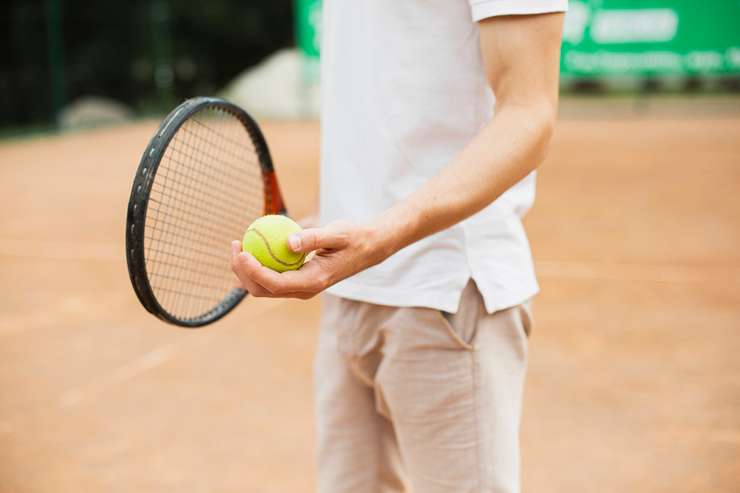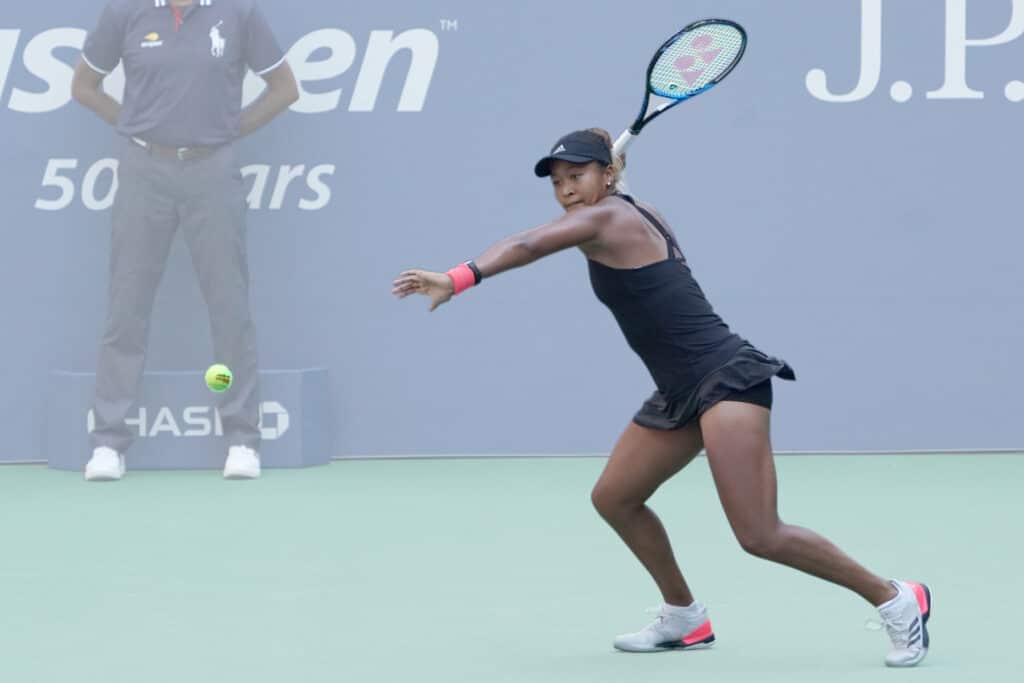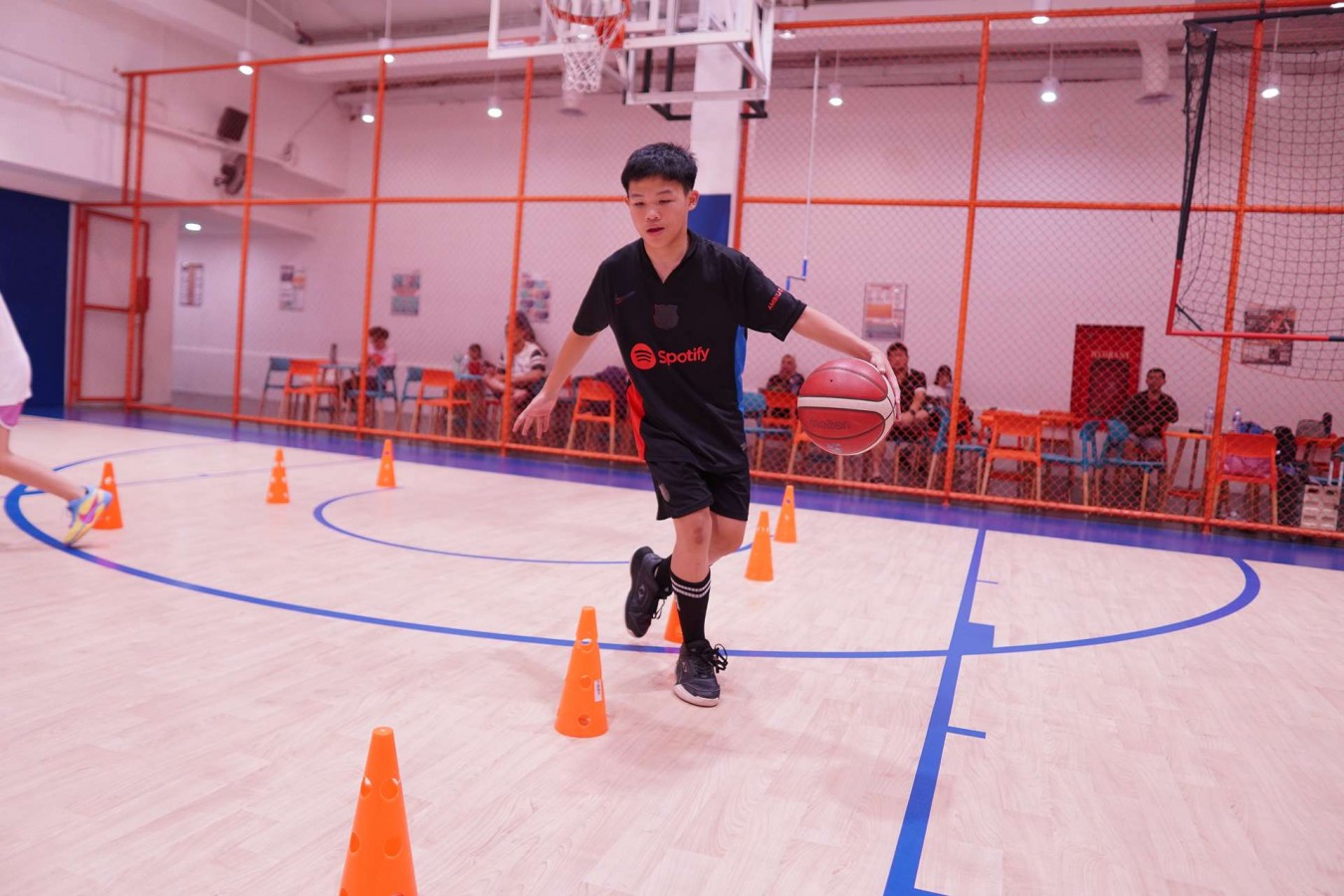How to Hit a Perfect Tennis Forehand in 8 Steps

The tennis forehand is one of the most essential shots in the game, often referred to as the cornerstone of a solid tennis strategy. A powerful and well-executed forehand can dictate the pace of a match and put your opponent on the defensive.
In this guide, we'll walk you through the process of mastering the perfect tennis forehand in 8 easy steps, including tips on the ideal forehand grips. By focusing on each step and practicing diligently, you'll develop a powerful and consistent tennis forehand that can elevate your game to the next level!
Step-By-Step on How to Do Forehand
The forehand is one of the most important and exciting shots in tennis. It’s the shot that lets you really showcase your power and control on the court. Whether you’re just starting or looking to refine your technique, here’s a guide to help you master the perfect tennis forehand:
1. Get the Right Grip

The grip you use is crucial for the effectiveness of your forehand. The grip translates the feel from the racquet strings to your hand, allowing you to manipulate the ball accurately.
The semi-western grip is highly recommended for a stable and reliable forehand stroke. To achieve the correct semi-western grip, follow these steps:
- Hold the Handle Properly
Ensure your hand is not perpendicular to the handle. If your hand is perpendicular, the index finger is not properly spread out, making the racquet feel heavy and harder to control. This misalignment can lead to tension in your wrist muscles and loss of feel, affecting accuracy.
- Correct Finger Placement
Spread your fingers slightly and place the base knuckle of your index finger under the racquet handle. This position allows for better support and control of the racquet head. The index finger helps push the racquet head up during the swing, enabling better topspin and control.
This small adjustment can significantly improve the stability of your grip, making your forehands more effective and precise.
2. The Ready Position & Stance

Before executing your forehand, your stance and ready position are vital. Start with your feet shoulder-width apart and your knees slightly bent. Position your non-dominant foot slightly forward, with your weight balanced evenly.
This stance prepares you to move quickly in any direction and ensures you are well-positioned to hit the ball. Keep your body aligned with the net and your racket up, ready to react to the incoming ball.
A strong and balanced stance will provide the necessary foundation for a powerful and accurate forehand stroke.
3. The Preparation
As the ball approaches, initiate your preparation phase by rotating your hips and shoulders to face the side of the court. Your non-dominant hand should be pointing towards the ball, while your dominant hand pulls the racket back.
This rotation sets you up for an effective swing by allowing your body to generate power from your core. During this phase, focus on keeping your eye on the ball and preparing to move into the optimal position for the shot.
Proper preparation ensures that you have the necessary momentum and control for the next step.
4. The Drop
The drop is a crucial part of the forehand stroke where you lower the racket head and position it behind the ball. As you prepare to swing, allow the racket to drop slightly below the level of the ball.
This drop helps you create the right angle to generate topspin and ensures a cleaner contact with the ball. It also positions the racket in a way that facilitates a smooth transition into the acceleration phase.
During this stage, focus on keeping your grip firm but relaxed, allowing for a fluid motion as you move to strike the ball.
5. The Acceleration
Acceleration is where the power of your forehand comes into play. As you move into the swing, begin to accelerate the racket head forward. This motion should be driven by the rotation of your hips and shoulders, not just your arm.
Accelerate through the ball with a smooth and continuous motion, brushing up against the ball to impart topspin. The acceleration phase is crucial for generating the power and spin needed for an effective forehand.
Ensure that your wrist remains firm but flexible to help guide the racket head through the shot.
6. The Swing Path

The swing path defines the trajectory and quality of your forehand. For a well-executed forehand, aim for a low-to-high swing path. Start the swing from a low position and follow through by bringing the racket head up and over the ball.
This path helps you generate topspin, making the ball curve and dip, which is essential for keeping your shots inside the court and making them more challenging for your opponent to return.
A consistent swing path ensures that you hit the ball cleanly and with the desired spin.
7. Contact & Extension
Contact is the moment when the racket meets the ball, and it is crucial for a successful forehand. Ensure that you make contact with the ball slightly in front of your body.
This positioning allows for better control and power transfer. Extend your arm fully through the contact point to maximize the force and accuracy of your shot. The extension should be smooth and controlled, maintaining the momentum generated during the swing.
Proper contact and extension ensure that you can place the ball precisely and with the desired depth.
8. The Follow-Through
The follow-through is the final part of the forehand stroke and is essential for consistency and control. After hitting the ball, continue the swing upwards and across your body.
The racket should finish over your opposite shoulder, with your body weight shifting onto your front foot. A good follow-through helps maintain balance and ensures that you don’t abruptly stop the swing, which can lead to mishits.
It also prepares you for the next shot by keeping you in a ready position. Focus on completing the follow-through smoothly to achieve a powerful and accurate forehand.
The Different Types of Forehand in Tennis
While it may look simple, the forehand actually comes in different flavors, each with its own spin, trajectory, and purpose. Players often mix them up depending on the situation, making the forehand a true weapon when mastered. Here are the three main types you’ll see (and maybe want to try yourself):
1. The Lifted Forehand (Topspin Forehand)
This is the bread-and-butter forehand of modern tennis. The racket brushes up the back of the ball, creating a strong topspin forehand that makes the ball dip quickly after clearing the net. Why is this important? Because it allows players to swing hard without worrying about the ball flying out.
Rafael Nadal's heavy topspin forehand kicks up high, pushing opponents back and forcing awkward returns. The lifted forehand is all about safety and consistency, perfect for long rallies, controlling depth, and wearing your opponent down.
2. The Flat Forehand
The flat forehand sends the ball zipping over the net on a lower trajectory, traveling faster and with more punch. This shot is riskier since there’s less margin for error (the ball can easily sail long), but when executed well, it’s a point-winner.
Players often use the flat forehand as an aggressive weapon when they see an opening. Picture Serena Williams smashing a clean, flat forehand down the line: explosive, direct, and almost impossible to chase down.
3. The Sliced Forehand
This is the trickster of the bunch. With a slicing motion, the racket cuts under the ball, producing backspin that makes the ball float slower and skid low after it lands. The sliced forehand is about disruption. It changes the rhythm, forces opponents to bend low, and can lure them into mistakes.
Roger Federer is the master of using the slice to mix things up, especially when transitioning to the net or breaking his opponent’s rhythm. It’s like saying, “Let’s see how comfortable you are with this awkward, slow ball.”
Tips to Improve Tennis Forehand
Here are some essential tips to improve your tennis forehand, broken down step by step in an engaging way:
1. Find the Correct Grip
The grip is your foundation. How you hold the racket directly affects how the ball travels after contact. While there are a few grip styles, most pros recommend the semi-western grip because it offers the best balance of control, stability, and topspin potential.
2. Power Comes from the Legs
It may look like the arm does all the work, but the real power in a forehand comes from the legs and body rotation. Think of it as a chain reaction: the energy starts from the ground, travels through your legs and hips, then flows through your arm and racket.
- In a semi-open stance, load your weight on your outside leg, then transfer it forward as you swing.
- In a closed stance, step into the ball with your front foot—this works especially well for short balls where you need extra punch.
Mastering this “ground-up” motion means more power with less effort.
3. Coil and Uncoil the Upper Body
Your legs may be the engine, but your upper body is the steering wheel. A good “unit turn” helps you set up for a strong, consistent swing. Keep your non-dominant hand on the throat of the racket as you pull back. Your arms should form an “L” shape, almost like you’re holding a beach ball.
This coiling motion stores energy in your torso. As you swing forward, you “uncoil,” unleashing that energy into the ball. It’s smooth, efficient, and adds both power and precision.
4. Stay Relaxed and Loose
Here’s a secret: tension kills your forehand. If your grip is too tight or your body is stiff, you’ll end up muscling the ball instead of letting the racket do the work. Instead, think of your forehand as snapping a bullwhip.
Keep your hand relaxed and your grip loose. This creates a natural “lag” in your swing, which boosts racket head speed and makes topspin easier. A relaxed forehand doesn’t just look smooth—it feels smooth.
5. Make Contact in Front
One of the biggest mistakes players make is hitting the ball too late. The golden rule? Meet the ball out in front of your body.
A quick checkpoint: at the moment of contact, your hitting shoulder should be slightly ahead of your chin. If your shoulder is stuck behind, you’re late. When you consistently hit in front, you’ll naturally get that classic “windshield wiper” follow-through, where the racket finishes across your body with topspin.
Ready to Transform Your Forehand?
To master the tennis forehand, understanding and practicing each step is essential. From perfecting your grip to refining your swing, every detail matters in developing a powerful and consistent shot. Keep working on these fundamentals, and you'll see your forehand transform into a reliable and formidable weapon in your tennis arsenal.
At Rockstar Academy, our Tennis Program is designed to elevate your game to the next level, whether you're aiming to perfect your touchtennis forehand or master every aspect of your play.
Our expert coaches provide personalized training that covers essential techniques, including the intricate details of a powerful and precise forehand. With access to state-of-the-art facilities and engaging practice sessions, you'll develop the skills needed to excel in competitions like the prestigious RockOlympics.
We're excited to offer a free trial of our Tennis Program, giving you a chance to experience firsthand the benefits of training with the best at the Sports & Performing Arts Academy. Don't miss out on this opportunity to enhance your game and join our thriving tennis community, sign up for your free trial today!
FAQ
What is the forehand in tennis?
The forehand is a stroke where you hit the ball with the front of your hand facing the direction of the shot, typically using an open or semi-open grip.
What is the most common stance to hit a forehand?
The most common stance for hitting a forehand is the open stance, where your feet are shoulder-width apart, and your body faces the net with weight balanced on your back foot.



